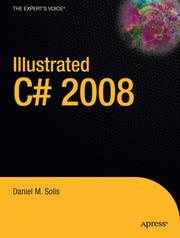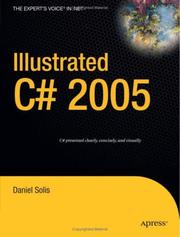| Listing 1 - 10 of 38 | << page >> |
Sort by
|
Multi
ISBN: 9781107015432 9781107695122 9781139058537 110701543X 1107695120 1107230233 1139058533 1139210068 1139215140 1139218239 1139221329 1139223038 1139224751 1280568879 9786613598479 9781139218238 9781139221320 661359847X 9781280568879 Year: 2012 Publisher: Cambridge ; New York : Cambridge University Press,
Abstract | Keywords | Export | Availability | Bookmark
 Loading...
Loading...Choose an application
- Reference Manager
- EndNote
- RefWorks (Direct export to RefWorks)
This book is about preferences, principally as they figure in economics. It also explores their uses in everyday language and action, how they are understood in psychology and how they figure in philosophical reflection on action and morality. The book clarifies and for the most part defends the way in which economists invoke preferences to explain, predict and assess behavior and outcomes. Hausman argues, however, that the predictions and explanations economists offer rely on theories of preference formation that are in need of further development, and he criticizes attempts to define welfare in terms of preferences and to define preferences in terms of choices or self-interest. The analysis clarifies the relations between rational choice theory and philosophical accounts of human action. The book also assembles the materials out of which models of preference formation and modification can be constructed, and it comments on how reason and emotion shape preferences.
Microeconomics --- Consumers' preferences --- Preferences (Philosophy) --- Value --- Rational choice theory --- AA / International- internationaal --- 305.6 --- 15 --- 339.320 --- Risicotheorie, speltheorie. Risicokapitaal. Beslissingsmodellen. --- Psychologie. --- Consumptie: algemeenheden. Wet van de vraag in verband met de consumptie. Consumptiebehoefte. Behoeftetheorie. --- Standard of value --- Cost --- Economics --- Exchange --- Wealth --- Prices --- Supply and demand --- Social choice --- Philosophy --- Brand preferences --- Choice (Economic theory) --- Choice of product --- Preferences, Consumers' --- Product choice --- Consumer behavior --- Consumers --- Revealed preference theory --- Psychologie --- Risicotheorie, speltheorie. Risicokapitaal. Beslissingsmodellen --- Consumptie: algemeenheden. Wet van de vraag in verband met de consumptie. Consumptiebehoefte. Behoeftetheorie --- Attitudes --- Business, Economy and Management --- Consumers' preferences. --- Value. --- Rational choice theory.

ISBN: 1281273686 9786611273682 1430205741 1590599543 9781281273680 9781430205746 Year: 2008 Publisher: Berkeley, Calif. : Apress,
Abstract | Keywords | Export | Availability | Bookmark
 Loading...
Loading...Choose an application
- Reference Manager
- EndNote
- RefWorks (Direct export to RefWorks)
The unique, visual format of Illustrated C# 2008 has been specially created by author and teacher of development methods, Daniel Solis. The concise text, use of tables to clarify language features, frequent figures and diagrams, as well as focused code samples all combine to create a unique approach that will help you understand and get to work with C# fast. It was while teaching numerous seminars on various programming languages that the author realized the immense power that diagrams have in explaining programming language concepts. Most people learn quicker and retain information better when the material is presented in a clean, simple, visual format. To achieve this result in his book, Solis uses concise text and bulleted lists, tables to clarify and summarize language features, as well as his renowned and ubiquitous figures and diagrams. Each language feature is illustrated with a concise and focused code sample for complete clarity. Following an overview of the .NET platform and the role played by C#, you'll soon move into exploring the C# language in its entirety, including all the new C# 2008 features right down to the most complex topics involved in C#. If you're a C++ or VB programmer migrating to C# 2008, this book will be invaluable; the unique visual approach offers a far from lightweight treatment of C# 2008, so even the most experienced programmers will come away with a deeper understanding of the C# language.
C# (Computer program language) --- Information Technology --- Computer Science (Hardware & Networks) --- General and Others --- Microsoft software. --- Microsoft .NET Framework. --- Software engineering. --- Microsoft and .NET. --- Software Engineering/Programming and Operating Systems. --- Computer software engineering --- Engineering --- Computer software --- Dot Net (Software framework) --- Microsoft .NET --- Microsoft .NET software framework --- .NET Framework

ISBN: 1280865482 9786610865482 1430204354 1590597230 Year: 2006 Publisher: Berkeley, CA : Apress,
Abstract | Keywords | Export | Availability | Bookmark
 Loading...
Loading...Choose an application
- Reference Manager
- EndNote
- RefWorks (Direct export to RefWorks)
Illustrated C# 2005 doesnt use the traditional dense prose format of most programming texts. Rather, it presents the C# programming language in a unique visual manner. The book uses three techniques to achieve this: concise text, tables that clarify and summarize language features, and frequent figures and diagrams. Each feature is also illustrated with concise, focused code samples. The book starts with an overview of the .NET platform and the role played by C#, then quickly delves into the language. It covers the entire C# language, including new features added in C# 2.0 as well as the most complex topics. It's an ideal read if you're a migrating C++ or VB programmer who already knows how languages work. Despite its title, which might give the impression that it's a lightweight treatment of the language, this book is anything but. With its clean visual format, you'll be able to learn the material more quickly and retain it better than you would with a typical C# 2005 book. Even experienced programmers may come away from it with a deeper understanding of the language.
C# (Computer program language) --- Programming languages (Electronic computers) --- Computer languages --- Computer program languages --- Computer programming languages --- Machine language --- Computer science. --- Software engineering. --- Computer Science. --- Software Engineering/Programming and Operating Systems. --- Electronic data processing --- Languages, Artificial --- Microsoft software. --- Microsoft .NET Framework. --- Microsoft and .NET. --- Computer software engineering --- Engineering --- Computer software --- Dot Net (Software framework) --- Microsoft .NET --- Microsoft .NET software framework --- .NET Framework --- Information Technology --- Computer Science (Hardware & Networks)
Book
ISBN: 0124104525 012410407X 1306070732 9780124104525 9780124104075 9781306070737 9780124104075 Year: 2014 Publisher: Waltham, MA : Academic Press,
Abstract | Keywords | Export | Availability | Bookmark
 Loading...
Loading...Choose an application
- Reference Manager
- EndNote
- RefWorks (Direct export to RefWorks)
Calculus of Thought: Neuromorphic Logistic Regression in Cognitive Machines is a must-read for all scientists about a very simple computation method designed to simulate big-data neural processing. This book is inspired by the Calculus Ratiocinator idea of Gottfried Leibniz, which is that machine computation should be developed to simulate human cognitive processes, thus avoiding problematic subjective bias in analytic solutions to practical and scientific problems. The reduced error logistic regression (RELR) method is proposed as such a ""Calculus of Thought."" This book re
Cognitive science. --- Cognitive neuroscience. --- Logic machines. --- Artificial intelligence. --- Logistic regression analysis. --- Regression analysis --- AI (Artificial intelligence) --- Artificial thinking --- Electronic brains --- Intellectronics --- Intelligence, Artificial --- Intelligent machines --- Machine intelligence --- Thinking, Artificial --- Bionics --- Cognitive science --- Digital computer simulation --- Electronic data processing --- Logic machines --- Machine theory --- Self-organizing systems --- Simulation methods --- Fifth generation computers --- Neural computers --- Machines, Logic --- Logic --- Logic, Symbolic and mathematical --- Cognitive neuropsychology --- Neuropsychology --- Science --- Philosophy of mind --- Computational neuroscience. --- Mathematical models.
Book
ISBN: 9781430242796 1430242795 Year: 2012 Publisher: [New York] : Apress,
Abstract | Keywords | Export | Availability | Bookmark
 Loading...
Loading...Choose an application
- Reference Manager
- EndNote
- RefWorks (Direct export to RefWorks)
This book presents the C# 5.0 language in a uniquely succinct and visual format. Often in programming books, the information can be hidden in a vast sea of words. As a programmer who has over the years used a dozen programming languages, the author understands it can sometimes be difficult to slog through another 1,000-page book of dense text to learn a new language. There are likely many other programmers who feel the same way. To address this situation, this book explains C# 5.0 using figures; short, focused code samples; and clear, concise explanations. Figures are of prime importance in this book. While teaching programming seminars, Daniel Solis found that he could almost watch the light bulbs going on over the students’ heads as he drew the figures on the whiteboard. In this text, he has distilled each important concept into simple but accurate illustrations. The visual presentation of the content will give you an understanding of C# that’s not possible with text alone. For something as intricate and precise as a programming language, however, there must be text as well as figures. But rather than long, wordy explanations, Solis has used short, concise descriptions and bulleted lists to make each important piece of information visually distinct. By the end of this book, you’ll have a thorough working knowledge of all aspects of the C# language, whether you’re a novice programmer or a seasoned veteran of other languages. If you want a long, leisurely, verbose explanation of the language, this is not the book for you. But if you want a concise, thorough, visual presentation of C# 5.0, this is just what you’re looking for.
Computer. Automation --- informatica --- C# (Computer program language)
Book
ISBN: 1282287265 9786612287268 0080922775 0123744881 Year: 2009 Publisher: London ; Boston : Academic,
Abstract | Keywords | Export | Availability | Bookmark
 Loading...
Loading...Choose an application
- Reference Manager
- EndNote
- RefWorks (Direct export to RefWorks)
This volume presents a variety of perspectives from within and outside moral psychology. Recently there has been an explosion of research in moral psychology, but it is one of the subfields most in need of bridge-building, both within and across areas. Interests in moral phenomena have spawned several separate lines of research that appear to address similar concerns from a variety of perspectives. The contributions to this volume examine key theoretical and empirical issues these perspectives share that connect these issues with the broader base of theory and research in social and cogn
Decision making --- Learning, Psychology of. --- Motivation (Psychology) --- Action, Psychology of --- Drive (Psychology) --- Psychology of action --- Psychology --- Learning --- Psychology of learning --- Educational psychology --- Comprehension --- Learning ability --- Decision-making (Ethics) --- Ethics --- Moral and ethical aspects. --- Psychological aspects --- Decisió, Presa de --- Motivació (Psicologia) --- Aspectes ètics i morals --- Psicologia --- Decisió (Psicologia) --- Presa de decisions --- Elecció (Psicologia) --- Estimació, Teoria de l' --- Jocs, Teoria de --- Solució de problemes

ISBN: 1281018244 9786611018245 1599964074 9781599964072 9780874259339 0874259339 Year: 2007 Publisher: Amherst, Mass. : HRD Press,
Abstract | Keywords | Export | Availability | Bookmark
 Loading...
Loading...Choose an application
- Reference Manager
- EndNote
- RefWorks (Direct export to RefWorks)
The ultimate solution for developing highly trained employees and achieving organizational success. Strategic Training: Putting Employees First. Daniel Wentland. Your organization’s survival depends on employee training – to brush off the importance of upgrading the skills of your employees is a dangerous strategic mistake. Based upon the STEM model, this book will show organizational decision-makers and human resource practitioners how to make quality employee training an integral part of the strategic planning process – and ensure the competitiveness of the organization. St
Employees --- Strategic planning. --- Goal setting (Strategic planning) --- Planning, Strategic --- Strategic intent (Strategic planning) --- Strategic management --- Planning --- Business planning --- Employee development --- Employee training --- Employees, Training of --- In-service training --- Inservice training --- On-the-job training --- Training of employees --- Training within industry --- Vestibule schools --- Occupational training --- Employer-supported education --- Training of.
Book
ISBN: 0804782067 9780804782067 9780804778657 0804778655 Year: 2012 Publisher: Stanford, California : Stanford Politics and Policy, an imprint of Stanford University Press,
Abstract | Keywords | Export | Availability | Bookmark
 Loading...
Loading...Choose an application
- Reference Manager
- EndNote
- RefWorks (Direct export to RefWorks)
The urgent need to professionalize Mexican police has been recognized since the early 1990's, but despite even the most well-intentioned promises from elected officials and police chiefs, few gains have been made in improving police integrity. Why have reform efforts in Mexico been largely unsuccessful? This book seeks to answer the question by focusing on Mexico's municipal police, which make up the largest percentage of the country's police forces. Indeed, organized crime presents a major obstacle to institutional change, with criminal groups killing hundreds of local police...
Police administration --- Police --- Police professionalization --- Police professionalism --- Professionalization of police --- Police management --- Management --- Vocational guidance --- Administration --- E-books
Multi
ISBN: 9781430232834 9781430232841 9781430232827 1430232838 Year: 2010 Publisher: New York : Apress : Distributed to the book trade worldwide by Springer Science+Business Media,
Abstract | Keywords | Export | Availability | Bookmark
 Loading...
Loading...Choose an application
- Reference Manager
- EndNote
- RefWorks (Direct export to RefWorks)
This book presents the C# language in a uniquely succinct and visual format. Often in programming books, the information can be hidden in a vast sea of words. As a programmer who has over the years used a dozen programming languages, the author understands it can sometimes be difficult to slog through another 1,000-page book of dense text to learn a new language. There are likely many other programmers who feel the same way. To address this situation, this book explains C# using figures; short, focused code samples; and clear, concise explanations. Figures are of prime importance in this book. While teaching programming seminars, Daniel Solis found that he could almost watch the lightbulbs going on over the students’ heads as he drew the figures on the whiteboard. In this text, he has distilled each important concept into simple but accurate illustrations. The visual presentation of the content will give you an understanding of C# that’s not possible with text alone. For something as intricate and precise as a programming language, however, there must be text as well as figures. But rather than long, wordy explanations, Solis has used short, concise descriptions and bulleted lists to make each important piece of information visually distinct. By the end of this book, you’ll have a thorough working knowledge of all aspects of the C# language, whether you’re a novice programmer or a seasoned veteran of other languages. If you want a long, leisurely, verbose explanation of the language, this is not the book for you. But if you want a concise, thorough, visual presentation of C#, this is just what you’re looking for.
Book
ISBN: 1607529270 Year: 2009 Publisher: Charlotte, NC : Information Age Pub.,
Abstract | Keywords | Export | Availability | Bookmark
 Loading...
Loading...Choose an application
- Reference Manager
- EndNote
- RefWorks (Direct export to RefWorks)
| Listing 1 - 10 of 38 | << page >> |
Sort by
|

 Search
Search Feedback
Feedback About UniCat
About UniCat  Help
Help News
News